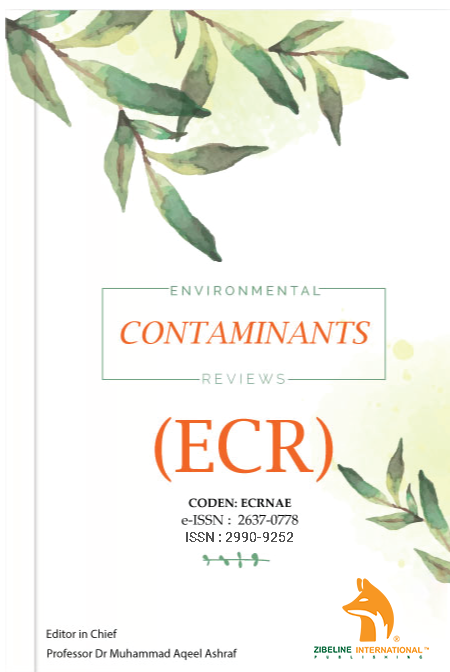
3D TIME-LAPSE GEOPHYSICAL IMAGING OF FERTILIZER-INDUCED SOIL AND GROUNDWATER CONTAMINATION IN OGHARA, DELTA STATE, NIGERIA
Journal: Environmental Contaminants Reviews (ECR)
Author: Ozobeme Azubike Anslem, Osisanya Olajuwon Wasiu, Airen Osariere John, Eyankware O. Moses, Iluobe, Oshomah Emmanuel
This is an open access article distributed under the Creative Commons Attribution License CC BY 4.0, which permits unrestricted use, distribution, and reproduction in any medium, provided the original work is properly cited
Doi:10.26480/ecr.02.2025.59.65
ABSTRACT
Fertilizer contaminants can persist in subsurface environments, making remediation efforts costly and time-consuming, particularly in areas with shallow aquifers and permeable soils. This study applied time-lapse geophysical methods to assess fertilizer-related soil and groundwater pollution in agricultural regions of Oghara, Delta State, Nigeria. Eight 2-D electrical resistivity imaging (ERI) surveys were conducted, including 16 grid-aligned lines across the Presco lowland and upland areas which were collated to form the 3 D models, along with a control line. Data were processed using RES3DINV and ZondRes3D to produce the 3-D resistivity models. Three-dimensional slices illustrated the downward migration of contaminants over time. Analysis of time-lapse data showed maximum vertical migration rates of 216.7 cm/month and horizontal rates of 750.0 cm/month at the initial site. At the second site, rates reached 122.5 cm/month vertically and 500.0 cm/month horizontally. Taking into account local hydrological and geological conditions, the contaminant plumes are projected to reach the dry sandy layer within 0.5 to 1 year.
KEYWORDS
Resistivity, Depth, slice, Lowland, Fertilizer.

